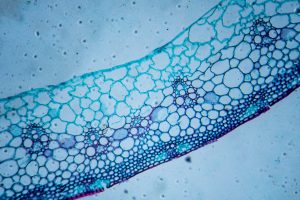
Stressing out with Indra
Dr David Marks of Levity Crop Science talks to Fertilizer International about Indra, the company's new stress alleviation product.

Dr David Marks of Levity Crop Science talks to Fertilizer International about Indra, the company's new stress alleviation product.

What dividends might farming technology deliver in future decades? Three vanguard companies, ICL Growing Solutions, John Deere and BigSis, share their thoughts.

In this CRU Insight, Anthony Rizzo explains why market participants should expect an uneven global demand picture in 2026 and highlights regional variations.

OCP Group subsidiary OCP Nutricrops has announced a major investment to expand its phosphate fertilizer production capacity by nine million tonnes by 2028.

Pursell Agri-Tech is to build and operate a controlled-release fertilizers (CRF) plant in Malaysia.

ATOME has signed a definitive engineering, procurement and construction (EPC) contract with Casale for its Villeta project in Paraguay.

Daewoo Engineering & Construction has signed a $700 million framework agreement to build a fertilizer plant in Turkmenistan. The agreement was signed in Seoul with Turkmenistan's state-owned chemical firm, Turkmenhimiya, according to the Turkmen Ministry of Trade, Industry and Energy, noting the Korean firm was named the preferred bidder for the project in October. The project aims to construct a fertilizer plant that will extract phosphoric acid from phosphate rocks and process the substance into 300,000 t/a of annually in eastern Turkmenistan by 2029.

The Sulphur Institute (TSI) held its World Sulphur Symposium in Florence from April 8th-10th.

Verdant Minerals says it has been granted two key productive mineral leases for its Ammaroo Phosphate Project by the Northern Territory government. The company says that this significant milestone advances one of the world's largest undeveloped phosphate resources, located about 220km southeast of Tennant Creek. Acting Chief Minister and Minister for Mining and Energy, Gerard Maley, stated, “This is a significant milestone in progressing a world-class resource project that will support jobs, drive investment, and strengthen the NT’s position as a leader in resource development.”

Chinese phosphate and battery chemical producer Chuan Jin Nuo Chemical (KMCJNC) has announced a $265 million plan to build a plant in Egypt to reduce its raw material and export costs. The company will construct facilities in the North African country to produce a range of intermediates and finished products, it revealed in its recent first-quarter earnings report. The plant will have a threeyear construction timeline. Planned capacities for the site are 800,000 t/a of sulfuric acid and 300,000 t/a of ammonium phosphate per year. Other core products will include phosphoric acid and sodium fluorosilicate. At full capacity, the plant is expected to generate over $41 million in net profit, according to feasibility studies.